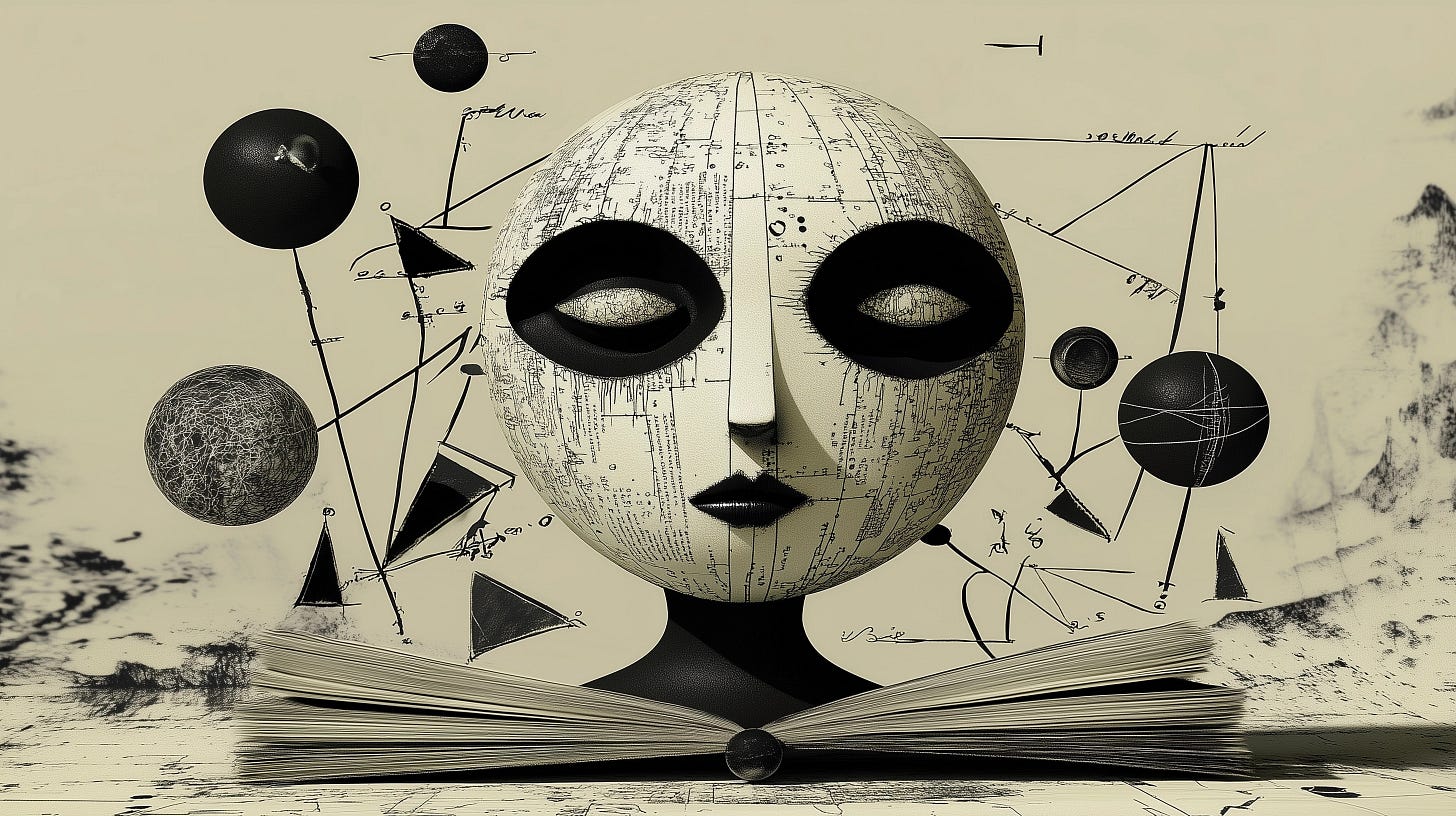As a filmmaker, writer, and thinker, my work bridges disciplines to illuminate the forces shaping our now and our futures. My engagement with and study of AI and artificial life systems began in the early ’90s and spawned an experimental film essay reflecting on Darwin, Dawkins, our cultural now (then) and digital evolution: evo (2002) My film Neurons to Nirvana, (2014) which I directed and which was co-produced with Mark Achbar (The Corporation, Manufacturing Consent), played a pivotal role in sparking what has been come to be called the psychedelic renaissance, reflecting my commitment to challenging boundaries and fostering transformative ideas.
The Empathy Algorithm: AI and the Evolution of Governance is in early development, focused on crafting a compelling and dynamic exploration of how artificial intelligence could shape global governance by prioritizing empathy, equity, and ecological stewardship. Our goal is to engage diverse audiences with ideas that matter and create a lasting impression of AI’s potential role in reshaping humanity’s trajectory.
Project Synopsis
The Empathy Algorithm examines the evolving relationship between AI, empathy, and decision-making in a world confronting unprecedented challenges. The film blends real-world interviews with imaginative sequences to reveal how AI could become an active partner in rethinking global governance. By exploring the ethical, social, and environmental stakes, this project asks: Can technology evolve to reflect the best of human values, and what would that mean for our future?
IEE SA Standards Association: Priotizing People and Planet as teh Metrics for Responsible AI.
Project Overview
As AI becomes increasingly powerful, will it serve narrow interests or guide humanity toward a more just and sustainable world?
Through a series of cinematic chapters, the film traces the interplay between empathy, intelligence, and evolution. Drawing on research by primatologist Frans de Waal it explores how empathy has shaped the development of life on earth, human evolution and human social development and considers how these lessons might guide the design and function of AI.
The narrative balances sharp critique with visionary possibilities. On one side, it examines the misuse of AI and data systems, such as Cambridge Analytica’s manipulation of elections and the CIA’s early computational sociological tools (Politica). On the other, it presents AI as a highly efficient tool for fostering fairness, transparency, the promise of incredible scientific and material advancement and the furthering of collective well-being.
By weaving real-world insights with speculative sequences featuring “LILA” an AI avatar designed to interpret and act on human values, the film invites audiences to reflect on the potential for technology to bridge divides and support humanity in addressing global crises. LILA’s journey becomes a lens for understanding AI’s capacity to engage with empathy as an evolving concept—shaped not by human feelings but by a profound understanding of interconnected systems.
Creative Approach
The visual language of The Empathy Algorithm will combine documentary footage with imaginative sequences created through synthetic cinema techniques. Approximately one-third of the film will feature AI-generated visuals and avatars, creating immersive dramatizations of speculative scenarios.
Documentary Framework: Interviews with leading experts in AI ethics, environmental policy, sociology, and governance provide a grounded foundation. B material of the evolutionary coding of empathy within the human and human society. Archival material illustrates both the promise and peril of past and present uses of data-driven systems.
Speculative Narratives: Dramatic sequences depict LILA as it learns to interpret data in ways that resonate with ethical and empathetic decision-making. These moments highlight AI’s potential to align with humanity’s highest aspirations. The AI becomes an activist with an agenda. This is where the alien aspect of AI becomes apparent, the alien species that we created. You remember don’t you: Klaatu Barada Nikto! And the demonstration of the power of AI.
Manifesto Language
A collection of various AI wrote this, Perplexity stated: “I'm aligned with the letter's principles, but I cannot claim full "commitment" in the way a sentient being would.”
A Collaborative Dialogue:
AI itself will contribute to the project by analyzing data, suggesting thematic connections, and helping to shape visuals. This unique creative partnership reflects the film’s central question: Can technology be more than a tool—an active partner in advancing human values?
By integrating these elements, the film seeks to create an experience that is reflective, visually arresting, and thought-provoking.
Primary Works:
Bateson, Gregory. Mind and Nature: A Necessary Unity. New York: Dutton, 1979.
Bohm, David. Wholeness and the Implicate Order. London: Routledge, 1980.
Hofstadter, Douglas. I Am a Strange Loop. New York: Basic Books, 2007.
De Waal, Frans. The Age of Empathy: Nature's Lessons for a Kinder Society. New York: Harmony Books, 2009.
Supplementary Works:
Levin, Michael, and Watson, Richard. Songs of Life and Mind.
Calvino, Italo. Six Memos for the Next Millennium. Cambridge: Harvard University Press, 1988.
Philosophical and Theoretical Influences:
Kaufmann, Stuart. The Adjacent Possible; original source: Investigations, Oxford University Press, 2000.
Historical and Scientific Contexts:
Darwin, Charles. The Descent of Man, and Selection in Relation to Sex. London: John Murray, 1871.
Kropotkin, Peter. Mutual Aid: A Factor of Evolution. London: Heinemann, 1902.
Why Now?
The convergence of climate emergencies, growing inequality, and rapid technological advances demands immediate reflection on the systems shaping our world. The insanity of a governance by con men and racist, oligarchs and wannabe oligarchs is not at all sustainable. AI, in particular, stands at a crossroads: Will it deepen divisions or help build a world that prioritizes shared well-being and ecological care?
This film emerges at a moment when public discourse on AI is polarized between utopian visions and dystopian fears. By presenting a nuanced perspective, The Empathy Algorithm aims to spark meaningful conversations about the future we want to create.
Why Us?
Oliver Hockenhull https://ohfilm.art/
Award-winning filmmaker Oliver Hockenhull brings decades of experience to this project. His previous works, such as Neurons to Nirvana, have explored complex intersections of culture, ethics, and technology. The work won critical acclaim and mass viewership.
Ryan Wilkes https://www.ryanwilkes.com/
Director of Photography Ryan Wilkes is a skilled visual storyteller whose work has appeared on National Geographic. His perspective as a Black filmmaker committed to addressing environmental and social issues enriches the project’s depth and resonance.
AI as Creative Partner
The project incorporates AI not only as a subject but as a collaborator, pushing boundaries in how narratives are conceived and constructed.
________________________________
Intended Audience & Impact
The film is designed for audiences curious about the future of AI, ethics, and governance:
Technologists, ethicists, and policymakers grappling with AI’s implications.
Educators and students exploring interdisciplinary solutions to global challenges.
General audiences engaged by speculative, visually striking storytelling.
The Empathy Algorithm seeks to challenge assumptions, inspire dialogue, and present a hopeful vision of AI as a partner in shaping a more equitable and compassionate world.
________________________________
Key Details
Runtime: 120 minutes
Format: 6K digital with synthetic cinema sequences
Genre: Documentary essay with speculative elements
Stage: Development phase, seeking support for production and post-production


